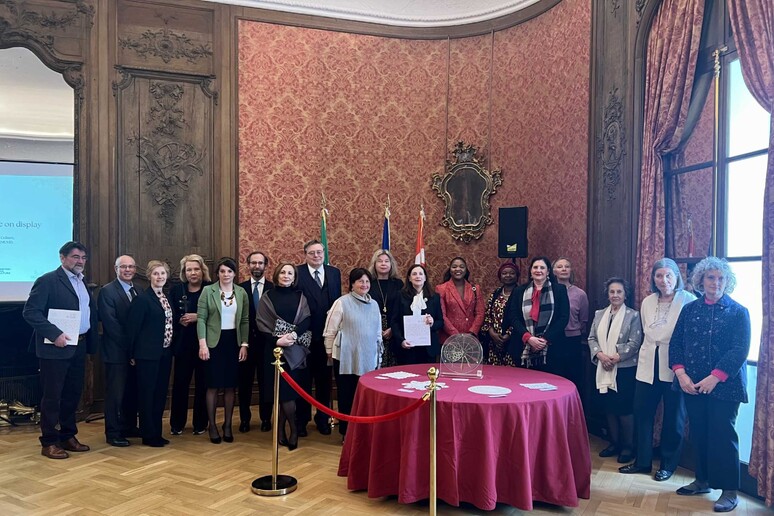The Art of Lace, in a unique exhibition exhibited for the first time abroad at the Italian residence in Copenhagen, today presented an ancient knowledge that has testified for centuries to the skills, tradition and culture of highly talented artists who grew up and matured far from the limelight: it is in the discretion of practice, often handed down from mother to daughter, that the art of lace-making has developed, true masterpieces produced by skilled hands, and that today lives on in various schools, brought together most recently in the extraordinary world of the 'Lace Biennial'.
An art that is certainly not minor if one looks at the knowledge and high professionalism required and that today speaks of places and territories, uniting 24 different Italian realities in a composite picture in which technique and harmony are balanced. Reproducing knowledge and culture in regional nuances, lace recalls the taste for beauty that makes objects and clothes precious, a transversal tool of societies in which craftsmanship excellence has followed the evolution of culture, absorbing its values.
A lesser-known page of the 'made in Italy', however, capable of rendering clear the mastery of a profession that continues, today involving niche productions all the way to haute couture, which remain the pride of Italian craftsmanship and continue to inspire the cult of beauty realised with needle and thread. An Italian skill that will hopefully become another testimony to the great universal heritage that Unesco protects, preserving for the benefit of all the most important expressions of peoples and territories.
Thanks to the invaluable collaboration of Dr. Elena Sinibaldi, from the Unesco Office of the Ministry of Culture, and Dr. Chiara Squarcina from the Fondazione Musei Civici di Venezia, the Danish public was able to see the various pieces on display up close, learn about the territorial context and the history that has characterised the development of the art of lace-making throughout the peninsula, and attend demonstrations by three Italian master lace-makers who took part in the event. The occasion also made it possible to talk about the various territories of origin of the artistic artefacts presented. A common thread guided the guests from the mastery of lace to the landscapes, history, the many paths through the territories and the many products that Italy has to offer.
ALL RIGHTS RESERVED © Copyright ANSA











